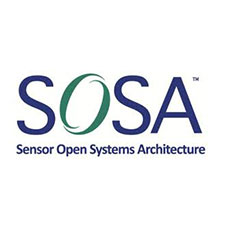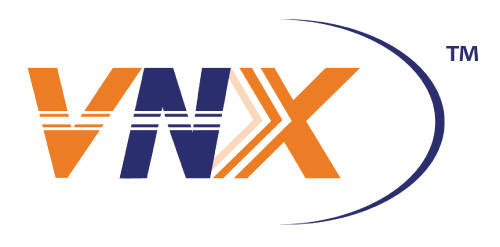SOSA™ defines an architecture and standards for modular entities for composing sensors with Electro-Optical/Infrared (EO/IR), Electronic Warfare (EW), Radar, and Signals Intelligence (SIGINT) modalities. Rather than defining an entirely new system, this Standard defines a set of logical modules that group functions, behaviors, and interfaces, which together define the logical architecture of a sensor. As a result, SOSA™ technologies can:
- Integrate into new or existing systems using SOSA™ defined sensors.
- Allow for greater design modularity for hardware or software in embedded systems.
- Permit the user to reconfigure Standards such as OpenVPX™ and SAE AS6169 for use as SOSA™ sensors.
- Facilitate rapid fielding of embedded technologies and platform reconfiguration.

Mezzanine
While offering greater flexibility as to how a user can interface with a carrier board, SOSA™ makes extensive use of proven and next-gen mezzanine Standards. This allows for high-density data I/O transfer across the full channel, ensuring reliable signal integrity in a rugged form factor.
Current Mezzanine Standards that are featured in SOSA™ include:
- VITA™ 42 – supports SOSA™ I/O Intensive Slot Profiles
- VITA™ 57.1 – ideal for SOSA™ users prototyping with FPGAs
- VITA™ 57.4 – next-gen speeds up to 32 Gbps for FPGA system-use or benchtop work
- VITA™ 88 – next-gen mezzanine interconnects allowing for PCIe® 5.0+ speeds and footprint compatibility with VITA™ 42




Small Form Factor
As the first Small Form Factor architecture of SOSA™, VITA™ 74 VNX™ is a truly modular Standard offering flexibility to integrate SOSA™ sensors in everything from a mesh-network of distributed SBCs to a traditional rackmount system.
Expanding on ANSI/VITA™ 74.0, SOSA™ VNX™ Plug-In Cards will utilize a variety of predefined combinations of high-speed, optical, and coaxial connectors. This greatly improves external I/O while allowing for integration of optical and coaxial connectivity in existing VNX™ systems.
SOSA™ VNX™ allows for:
- Addressing the industry need for rugged, high-density solutions in spaces smaller than 3U.
- Higher density and performance in a package about 33% the size of 3U VPX.
- Design flexibility ranging from 1x SBC, 8x VNX™ Plug-In Cards to mesh topologies via cable.
- Improved two-level maintenance at the box level; no need to replace individual Plug-In Cards.
- Cost-effective SFF solutions based around COTS modules and connectors.



